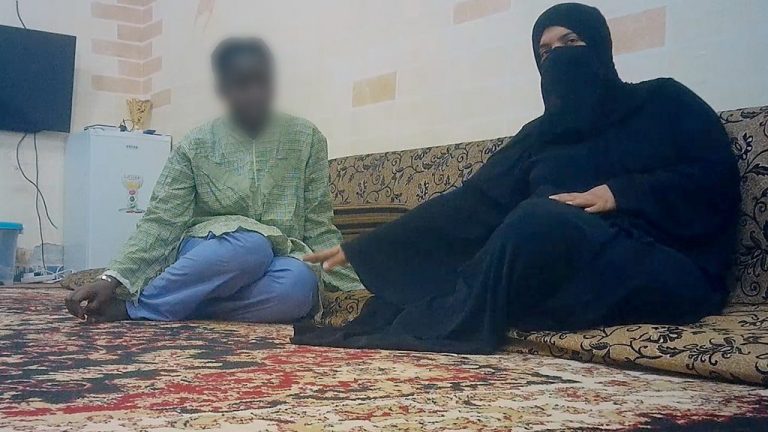A video that surfaced online has laid claims that the Islamic institute were the ones who redefined the human slave trade in Africa. It was then aided and abetted by the new black Islamic converts.
Slavery was not invented by the whites because it existed throughout human history among every civilization and culture.
The term slave was originated from the Slavic People of Europe who were subjugated by their fellow Europeans. The Arabic name “Abdula-Allah” which means Slave of Allah, “Malud” means white slaves and the name “Abid” which means lower-blacks all attest to the fact that the slave trade has strong Islamic origins.
The slave trade originated from the Holy Jihad wars where used to amass a large number of black slaves whom were castrated and enlisted into the Jihadist army to be able to conscript more and enhance the slave trade network all over Arab nations.
Male slaves would work as field workers or guards at the harems. To ensure that they never reproduced in case they got intimate with their fellow female slaves, the men and boys were castrated and made eunuchs in a brutal operation where majority would lose their lives in the process.
“The practice of castration on black male slaves in the most inhumane manner, altered an entire generation as these men could not reproduce. The Arab masters sired children with the black female slaves.
Around the 9th century, Arab traders began to settle along the East Africa coastline. These people became known as the Swahili, which is now also a language used in parts of Eastern Africa. The Arabs began to develop large agricultural plantations in this area for things like growing spices. Slave labor greatly expedited production and profit to the Muslim states.
The Arab slave trade moved into Ethiopia as well. Eventually, the Arab slave trade expanded to not only Muslim strongholds like Egypt, Arabia, and the Persian Gulf, but also to India, the Far East, and the Indian Ocean islands. The slaves began to include Europeans and Asians, caught by North African pirates or on Arab raids of Europe. Arab traders were now involved in enslaving and selling slaves in Africa, Asia, and Europe.
The Arab slave trade exploded in the late 9th century as the demand for agricultural to reclaim fertile farmland in Iraq grew. The Arab slave trade grew to African slaves from west Africa as well. In the late 18th century, Europeans began to colonize Africa and establish plantations, furthering demand for slaves.
“The Arabs raided sub-Saharan Africa for thirteen centuries without interruption. Most of the millions of men they deported have disappeared as a result of inhuman treatment. This painful page in the history of black people has apparently not been completely turned,” read a loosely translated excerpt from The Veiled Genocide a book by Tidiane N’Diaye, a Franco-Senegalese author and anthropologist.
Enterprising Arab merchants and middlemen would gather in Zanzibar for raw materials including cloves and ivory. They would then buy black slaves who they would use to carry the raw materials and also work in their plantations abroad. Slaves from as far as Sudan, Ethiopia and Somalia would be availed at the Zanzibar market and shipped through the Indian Ocean to the Persian Gulf or Arabic Peninsula where they worked in Oman, Iran, Saudi Arabia and Iraq. African Muslims were however never captured as slaves due to the Islamic legal views.
On the other hand the Trans Saharan Caravan concentrated on the West African region straddling the Niger Valley to the Gulf of Guinea along the TransSaharan roads to slave markets in Maghreb and the Nile Basin. The voyage that world take up to three months involved inhumane conditions that saw slaves die along the way due to diseases, hunger and thirst. An estimated 50 percent of all slaves in this trade would die in transit.
While European merchants were interested in strongly built young men as labourers in their farms, the Arab merchants were more focused on concubinage capturing women and girls who were turned into sex slaves while living in harems. So high was the demand that the merchants would double the price of female slaves with the ratio of captured women to men being three to one.
Read Also: World Still Lives In The Shadow Of Slave Trade – UN
Throughout Mohammaden-Islamic history, slaves served in various social and economic roles, from powerful emirs to harshly treated manual laborers. Early on in Muslim history, they were used in plantation labor similar to that in the Americas, but this was abandoned after harsh treatment led to destructive slave revolts. Many rulers relied on military slaves, often in huge standing armies, and slaves in administration to such a degree that the slaves were sometimes in a position to seize power. Among black slaves, there were roughly two females to every one male. Two rough estimates by scholars of the number of slaves held over twelve centuries in the Muslim world are 11.5 million and 14 million, while other estimates indicate a number between 12 and 15 million slaves prior to the 20th century.
The Arab slave trade has lasted for 14 long centuries, even longer than the European slave trade and it still continues in some Arab countries to this day.
Nine out of 10 Kuwaiti homes have a domestic worker – they come from some of the poorest parts of the world to the Gulf while others are imported from poor African Countries, aiming to make enough money to support their family at home.
More than a dozen people try to sell their domestic workers every day in Kuwait.
The sellers almost all advocated confiscating the women’s passports, confining them to the house, denying them any time off and giving them little or no access to a phone.
“You will find someone buying a maid for 600 KD ($2,000), and selling her on for 1,000 KD ($3,300),”
In most places in the Gulf, domestic workers are brought into the country by agencies and then officially registered with the government.
Potential employers pay the agencies a fee and become the official sponsor of the domestic worker.
Under what is known as the Kafala system, a domestic worker cannot change or quit her job, nor leave the country without her sponsor’s permission.
This online slave market is not just happening in Kuwait.
In Saudi Arabia, the investigation found hundreds of women being sold on Haraj, another popular commodity app. There were hundreds more on Instagram, which is owned by Facebook.
AFRICA DAILY NEWS, NEW YORK










